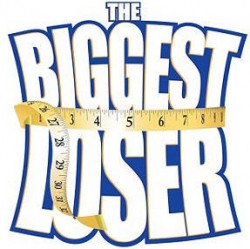How to Adopt an Intermittent Fasting Diet
Intermittent fasting (also known as, "IF") is the practice of periodically going without food for repeated periods of time, typically on the order of 16 to 20 or up to 36 hours and then eat. Then fast again after the flexible feeding window, the feeding period can slide and vary, as your schedule varies. Intermittent fasting is often, but is not necessarily, a way to lose weight — though it is a good way to regulate/schedule your food intake. On the other hand, "ad lib" eating on an unrestricted time for consuming food when it strikes you increases the chance of obesity.[1] Sedentary/Inactive persons may not lose much weight by IF! But, by choosing one of the many regimes out there, or planning your own, you may experience a variety of mental, physical, and lifespan benefits, across the possible span of outcomes, including weight loss. Here's how...
Steps
-
1
Sleep as part of fasting, and stay busy when awake. Then when fasting, it will feel natural to look forward to eating later on. Realize this is not at all like crash dieting. This is moderate eating, but skipping some meals for hours. You won't be or feel deprived because you know you will get to eat a big meal soon. The first/main meal of the feeding period will be the reward for the fasting period, and you will be hungry after fasting; so eat... Then lower the intake on the later meals. Do not let the "pig out", on feeding intervals, but eat plenty, healthy foods.
- If you normally eat 2000 or 3000 calories per day, then you might cut the calories only a little during feeding periods, like skipping breakfast and eating a late lunch and lighter dinner and lighter snacks. So, you can eat during the non-fasting time as you would if not fasting on good healthy food. Have some healthy carbs, avoid white bread, white noodles, but have some complex carbs (like eat some potato to feel satisfied) and some fats (nuts and fish have omega3 fatty acids which are good for the heart).
- Going too low on carbs and fat can be very hard to do or to maintain -- because of feeling unsatisfied and deprived. Just skip eating, when fasting, then look expectantly for the feeding time, and eat very well when you do eat.
-
2
Set your goal. Determine whether fasting is the right tool to help you achieve it. This will give you added mental strength to continue fasting, should you need it. Some goals for which IF is well suited include:[2]
- Reducing time spent eating, and you will probably eat a reduced number of meals. "Time-Restricted Feeding Prevents Excessive Body Weight Gain, Hepatosteatosis, and Liver Damage".[1]
- Extending lifetime expectancy, by burning off body fat, as well as cholesterol, lowering blood pressure and blood sugar.[3]
- Losing body fat -- "Time-Restricted Feeding (tRF) Improves Overt Rhythms and Attenuates Body Weight Gain" raising IGF1, "insulin like growth factor one".[1]
- Alleviate inflammation in your body -- "Time-Restricted Feeding Raises Bile Acid Production, Improves Adipose Tissue Homeostasis, and Alleviates Inflammation".[1]
- Enhancing focus and alertness -- by Increasing (nor)epinephrine levels.
- Raising mass of bone, organ, and muscle -- by increasing growth hormone levels.
- Helping you fight off infections and illness -- increasing autophagy and associated immune functions.[1]
- Raising metabolism" -- the body's energy system becomes more efficient to use stored fat/energy.[3]
- Use of sugar improved -- "Hepatic Glucose Metabolism Is Improved under Time-Restricted Feeding".[1]
-
3
Decide when you will have your last meal in your eating period. Some people like to choose whether to eat or not on a casual, day-to-day basis, but those who like more order in their lives may set up a schedule, such as:
- "I'll fast for 23 1/2 hours daily." -- 6PM eat; 24 hr later: 6PM eat (choose your time).
- "I'm not eating at all on Mondays and Thursdays, but I'll eat healthily on the other 5 days." -- Example: Sunday PM 'til Tuesday AM = 36 hrs fasting!
- "I'll eat at 7:00 PM tonight, then eat at 12:00 noon, fasting about 17 hours and eat again at 7:00PM." -- Two meals daily.
- "I'll eat 6 or 7 hours after getting up, after my 8 hours of sleep." -- I plan to not eat during the last hour or two before bed time (so, I'll fast up to 16 hrs per day).
- 4 Reduce uncomfortable toxicity symptoms by allowing your system to detox. Ease into the fast by changing your diet to decrease your consumption of processed foods (sugary cereal, granola bars and protein bars actually are like "candy"), including processed meat, dairy, or soda.
-
5
Eat your last non-fasting meal. Eat more fresh vegetables and fruits. Some people binge a little starting this strategy, though this means that you will spend more time digesting your food and less time in the "fasting adapted phase" of your food-abstinence period.
- Avoid eating sugar, or a lot of carbohydrates, especially as the last non-fasting meal, because it tends to make you hungrier earlier into your fast, due to a high "sugar-rush" followed by a "hypoglycemic/low-sugar crash".
- 6 Wait. Keep mentally occupied/physically busy. Do not cut calories much when in the feeding window. Eat plenty and healthily. The benefit of the fast comes primarily from the caloric and carbohydrate restriction in the fasting window, not the eating window. Water is absolutely fine, so you may consume as much as you want, and one snack of a couple hundred calories of protein and fat (nuts, cheese, etc.) will not massively impact the effectiveness of beginning and carrying out your fast.
- 7 Resume eating healthily and enough, not starving, during your daily feeding window. Avoid carb loading, or binging on simple carbs. Again, no special preparation is required.
-
8
Repeat your fast as often and as long as you want.
- We do not require 3 or 4 meals daily, not even one per day. Our ancestors may have had to work hard for a day or two to get food. There was often only one meal that they had hunted, gathered or earned that day.
-
9
Get lean while training: How? -- "Never" cut your calories to below 10 calories per pound of body weight. So, a 180 pound man would need at least 1800 calories per day to get lean, not by starving, while training moderately. Train just before or after your first meal -- or during the feeding window, if you are having two meals. So, you will not be fatigued or feeling deprived. Going too low on calories is creating damage to your health when working out.
- When maintaining your weight, you might try going up 25% to 40% to about 12.5 to 14 calories per pound, 2250 to 2500 per feeding day (based on a 180 pound man). What will be right for your maintenance depends on the calorie expenditure, burned by your lifestyle and exercising.
- Skinny goal: Aerobics, or cardio, exercise in long sessions avoid gaining muscle -- if you want skinny, lanky, slim framed goals, as they will burn muscle as well as fat. Runners and dancers, etc. burn off protein by aerobics, and do not build a muscled physique. You decide.
- Muscled goal: Anaerobic exercise, short bursts of exercise (limit raised pulse/heart rate and short times of high rates of breathing): Anaerobic means no long times of pounding heart like running. It is based on short times of doing resistance or weight exercise to build a more muscled physique, not long sessions of aerobics or cardio.
- Interval training is in between, not so aerobic. May be more like anaerobic. It is like a short burst, short session, a short dash -- not distance running.
- 10Keep your body well hydrated with water, herbal tea and such as a crucial factor of facilitating continuous detox and keeping the body in an optimal state for healing.
-
Do’s and Don’ts of Losing Weight the Healthy Way
If you’re trying to lose weight, you are one of the million peo
-
Creative Weight Loss Is Just A Few Great Tips Away!
TIP! A great way to help stick to your weight loss goals is t
-
6 Eating Mistakes Keeping You At A Heavier Weight Than Youd Like
Start by performing triage on the six bad eating habits listed here. B
-
I Lost 50 Pounds, And Gained It All Back. Heres What Went Wrong.
As a teen, I was driving in the car with my mom when she mused, "
-
3 Things Your Birth Predicts About Your Health
You eat right, exercise, and try not to sweat the small stuff. You sho
-
How to Lose Weight in a Week
Losing weight is tricky. For most people, it takes time. But if you a
- DON'T MISS
- Right Attitude For Weight Loss
- Is a Measuring Tape Better Than A Scale?
- Great Advice For Times You Need To Lose Weight
- 6 Bedtime Habits That Help You Lose Weight
- Using Calorie Counting To Lose Weight Rapidly
- Is It Really Possible to Achieve Healthy Weight Loss Quickly?
- The Most Effective Abdominal Exercises Performed In 10 Minutes
- Are Diet Pills a Good Way to Lose Weight?
- Wipe Out Cellulitevar zeus = zeus
- Need Weight Loss Advice? Read This Article!




